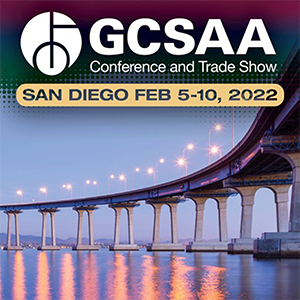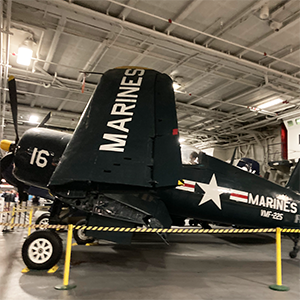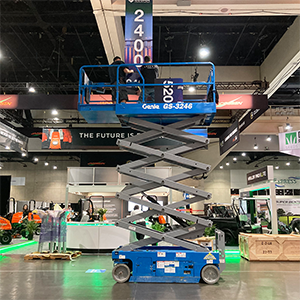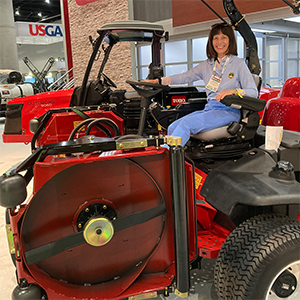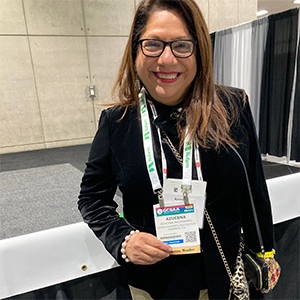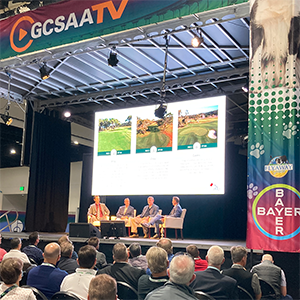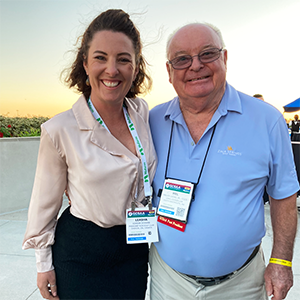
New Zealand – Part Four
The South Island
Were we ever lucky. Months ago, when we scheduled our flight from Wellington to Queenstown on the South Island, we had no idea we would board our flight just ahead of a cyclone. States of emergency were declared when Cyclone Gabrielle hit Auckland and many other areas of the North Island. This extreme weather event wrecked more havoc as the country already had to deal with heavy rain, destructive flooding and high winds in January.
We were delighted to be checking into the Hilton Hotel Resort on the banks of Lake Wakatipu for four fabulous nights. Our suite was spacious and luxurious. We had a relaxing afternoon before a casual dinner in the lakeside Stacks pub. Blessed with gorgeous sunshine, we headed out early to The Hills Golf Club in Arrowtown for our 9.30 am tee time. Kevin and I wanted to savor every moment of this extraordinary experience, starting with the best breakfast sandwich and smoothie I have ever tasted, bar none.
We were welcomed warmly by Craig Palmer the GM/Director of Golf, who handed us our scorecards, and rang up my purchases, which included a wide brim hat to shield me on this blue sky day. As I said in Part Three, I knew about this place before I wrote the The Hills profile for Terroir of Golf, A Golf Book for Wine Lovers. I was astonished to learn that Sir Michael Hill was a passionate art lover and he created not only a world-class club and course but a magical sculpture park to boot!
It’s one thing to see pictures of three-dimensional artwork in a book or online and an entirely different experience to get up close to these monumental works of art. Once out on the course it’s not long before you are confronted with Sean Henry’s bronze titled “Seated Figure.” Who is this bearded traveler that appears deeply lost in thought? I loved Mark Hill’s work titled “Elegance” and I was especially enchanted with the “Dragon Flies” over the pond by the 6th fairway/green. Then, immediately following is the dramatic display of 5 Clydesdale horses on the 7th fairway — titled “The Frolic and The Fancy” by Max Patte.
But without a doubt, my favorite piece was “Solace in the Wind.” This cast iron work, sited on the bridge at the 10th hole, is also by Max Patte.
The figure is arching back and leans precariously into the wind, exuding a spiritual or even metaphysical quality. It speaks to me. You can read more about The Hills experience and the many sculptures in the Terroir book.
From our base at the Hilton Resort, we wound our way to Terra Sancta to meet up with winemaker, Andrew Keenleyside. Andrew is also featured in Terroir of Golf in the chapter called “Winemakers Talk Terroir.” And boy, does he ever. He speaks so poetically about the rumble-jumble of the terrain characterized by schist, I could listen to him for hours. He talks of the shingle, river gravel and limestone and how all that minerality creates such flavorful wines.
There is simply nothing like tasting wine with the winemaker himself. The cellar door at Terra Sancta is so warm and welcoming. The whole vibe of the property, surrounded by vineyards on all sides, is magical. When I asked Andrew about the stunning wine bottle labels, I was mesmerized by his eloquent descriptions of all the images that illustrated the story of this special place, the founders and the product itself.
Andrew also explained another reason the vines are so happy is because of the Babydoll Sheep! Thanks to their flock of these gentle creatures, they have such a good yield of manure they don’t have to fertilize now!
You’ll find colorful names like Miro, the vineyard dog (he’s even got his own block that produces Riesling), Crocodelia, and Bad Bunny. You’ll see a rendering of the Kawarau River and the luscious pinot noir grapes that the Central Otago Valley is known for. If you can make the journey yourself you can learn about the “Mysterious Diggings.” OK, I’ll give away a little bit of the lore — it has to do with the gold sluicings from the 19th century gold rush.
We made our way back to Queenstown, where we ventured for dinner at Paddy Gaddy on the main street, called The Mall. You might not guess that the food is Asian Fusion. But our favorite meal was at the Flame Bar and Grill. Fabulous seafood, ribs, burgers and views.
I’d say hands down, Kevin’s favorite was the ice cream at the Patagonia Creamery and Chocolaterie. Now this is a place with a story! It was founded by Argentinians Alex Jimenez and Lorena Giallonardo. The dream to create the exquisite chocolate of their homeland led to five cafes located in the Southern Lakes of New Zealand where they roast their own coffee and offer a dizzying array of exotic ice cream flavors along with gorgeous boxed gift sets of their delicacies.
Alas, it was time to fly to Australia to continue the epic adventure.

































































